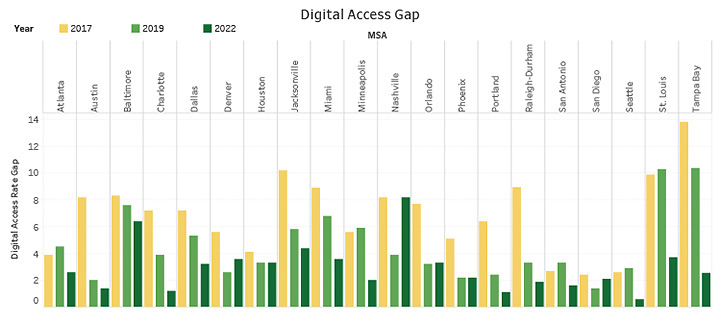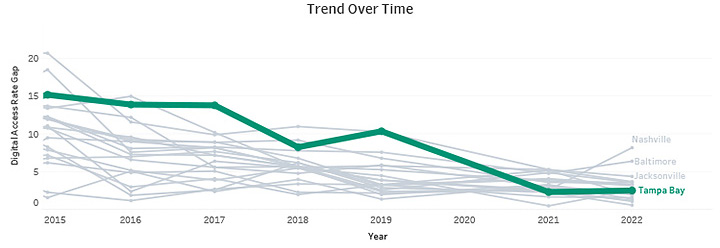2024 E-Insights Report
Black-White Digital Access Gap
Digital Access Rate Gap

Trend Over Time

Competitive Position Trend

About: This measures the Black-white gap in the share of households with a computer and
a dedicated physical broadband internet subscription using a service such as cable,
fiber optic, or DSL. Calculated by subtracting the African-American households with
a computer and a dedicated physical broadband internet subscription from white American
households.
Source: U.S. Census Bureau, American Community Survey, Table B28009.
- Over the years, there has been a gradual reduction in the digital access gap between Black and white populations. The disparity observed in 2013 has considerably diminished by 2022.
- The competitive ranking of the Tampa Bay region has shown significant improvement, moving from 18th place to 10th.